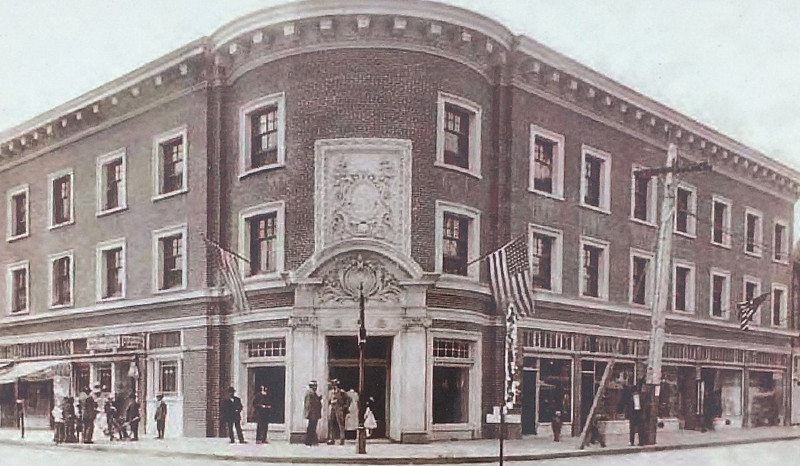By Jim Clifford
The Sequoia Hotel in downtown Redwood City became a historic landmark in 1981 when city officials designated it a reminder of an era when “several impressive hotels graced the area around Main and Broadway.” Gordon Seely, a retired history professor, remembers those days quite well.
Like author Kay Thompson’s Eloise—the precocious fictional 6-year-old who lived in New York’s Plaza Hotel and became beloved in both books and movies—Seely spent his early years in the Sequoia Hotel. (The April edition of Climate featured a detailed story on a proposal for its redevelopment.)
“I lived in the hotel from 1930 to 1934 with my parents,” said Seely, who taught at San Francisco State and was named emeritus in 2000. The hotel was operated by his grandparents, August and Mae Smith Fromm. August Fromm was the major shareholder in the company that owned the building which also housed a drugstore and candy store. The Fromms had prior hotel experience, having operated the Capitol Hotel located a half block away on Broadway. That hotel lost two floors in the 1906 earthquake, leaving the city without a major hotel. Seely’s dad, also named Gordon, was the proprietor of a cigar store about a half block from the Sequoia.
This story was originally published in the June edition of Climate Magazine.
Just 4 years old when he started living in the Sequoia, Seely’s earliest memory of his time there is from 1932 when a nearby paint shop burned to the ground. “I can vividly remember being held in my grandfather’s arms and looking out from the second-floor parlor” as the store burned to the ground, along with an inventory that included large plaster of Paris Santa Clauses that were put out at Christmas time. I can still see the Santas amid the flames.”
Lavish in its Day
The three-story Sequoia Hotel, which opened in 1913, was expensively decorated and furnished, Seely wrote in the Journal of Local History’s winter 2012 edition. “Every two rooms had a bath and hot and cold running water. There were public restrooms on every floor and the ground lobby led to a dining room and public restaurant.” The Sequoia had three parlors where business and social meetings were held.
The grand opening April 17, 1913, drew much fanfare, including one newspaper’s estimation that the Sequoia was the “finest hotel” on the Peninsula. The circular lobby had a polished hardwood floor extending to the main dining room. There was an oak staircase that stretched from the lobby to the second floor, which led to a parlor. “As well as managing the hotel, my grandfather tended bar and handled the front desk while my grandmother ran the restaurant and dining room,” Seely said.
The Sequoia Hotel was popular with fraternal groups, such as the Kiwanis, who met in the dining room. It was also a temporary home to attorneys who came for cases in the nearby courts. President Herbert Hoover was, according to some reports, the hotel’s most famous guest. ‘’Hoover slept here” doesn’t quite have the panache of the New England Realtor’s cliché that “George Washington slept here,” but it adds an historical footnote that, apparently, is wrong.
VIP Guests
According to Seely, Hoover never stayed at the Sequoia. “My parents were staunch Republicans and, believe me, if he had they would have told everyone.” The most important politician Seely recalled meeting as a little fellow was Governor “Sunny” Jim Rolph who “bounced me on his lap during a visit to the hotel.”
The Hoover legend just keeps feeding off itself. The accepted line is that the President stayed at the Sequoia in 1928 and rode in a car during the July 4th Parade. The claim is made in several city publications, including a 1976 city planning department report on historic structures. This, despite the fact that the Redwood City Tribune’s July 4, 1928, issue reported there was no parade; the city “was deserted” with citizens attending events elsewhere because fireworks were banned in Redwood City.
Seely does, however, recall Hoover passing through town in an open touring car. Conceding his memory “may play tricks,” Seely thinks Hoover, who was an 1895 Stanford graduate, was on his way to the university. According to the book “Redwood City: A Hometown History,” Hoover rode in a car in a parade in 1928 shortly after his election but before his inauguration. The “special parade” gave citizens a chance to see and cheer their new President who would soon face the Great Depression.






